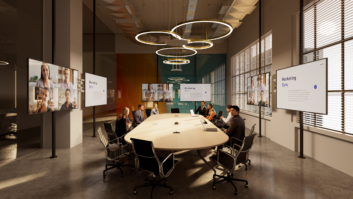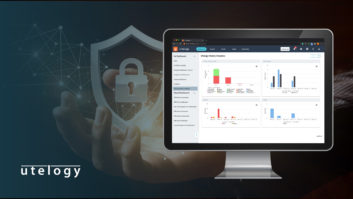The desire for discreet AV installation has been a driving force behind custom installation for more than a decade as integrators seek to strive to remove the visible trappings of gauche gadgets from premium living spaces.
Equipment racks and black boxes have long since given way to unseen multiroom audio, delivered by unobtrusive architectural or invisible loudspeakers, components hidden away and accessible only by apps or personal control devices.
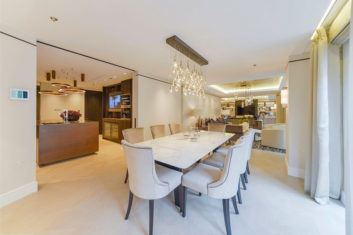 Less is definitely more. But what does the trend mean for the wider AV industry? Just as consumers moved away from physical media, opening the door to wireless streaming and network storage, innovative projection, AoIP and VoIP are all impacting design and client expectations in the Pro AV space.
Less is definitely more. But what does the trend mean for the wider AV industry? Just as consumers moved away from physical media, opening the door to wireless streaming and network storage, innovative projection, AoIP and VoIP are all impacting design and client expectations in the Pro AV space.
And how does discreet AV differ from sector to sector, and does the trend for discreet also equate to compromise when it comes to performance?
We talked to installation brands adopting this discreet ethos and tracked its migration from high-end residential aesthetic to commercial imperative…
Varying importance
Magewell specialises in hardware for video and audio capture, and routinely services live events, video conferencing and related Pro AV projects. Nick Ma, CEO and CTO, says the importance of discreet AV design varies greatly between vertical markets, and even from project to project within the same end-customer.
“A corporate client may want a very discreet installation in a conference room that will be used to host investors and executive board members, but be a bit less concerned about aesthetics in small meeting rooms and huddle spaces that are only used by internal employees,” he tells us.
“We work primarily in the commercial AV market rather than residential, but we’re seeing the significance of discreet AV expanding across more verticals. Hospitality and cultural arts venues such as museums were at the forefront of the movement, but it’s now also growing within education and select corporate environments.”
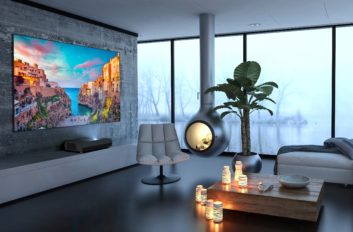 AV over IP is helping manufacturers and integrators design discreet solutions, suggests Ma.
AV over IP is helping manufacturers and integrators design discreet solutions, suggests Ma.
“It helps minimise the number of cables required, for example, where a traditional signal-based product could need at least three separate connections for audio/video, power, and control, an AV over IP product leveraging PoE can carry all of these signals and functions on a single network cable,” he says.
“That said, at some point the AV over IP system will need to interface with traditional signals – for example, bringing an HDMI video source into the system, or showing the content on an HDMI display – which is where our Pro Convert family of encoders and decoders come in. They’re designed to seamlessly bridge traditional AV signals, IP streams and screens, encoding traditional video signals into AV over IP formats such as NDI, or decoding streams for display on baseband monitors and projectors.
By supporting PoE and a browser-based management interface, they require just a single cable for the IP stream, power and control, plus another cable for the corresponding HDMI or SDI input or output, and they are extremely compact, which makes them easy to install. “
Visible sacrifices
In Ma’s view, customers are not willing to sacrifice attributes like video quality and system reliability for such simplicity, as any sacrifices there may visibly affect the resulting AV experience.
“It doesn’t matter if the technical installation looks great aesthetically, if the on-screen AV experience that the technology powers does not,” he says. “What customers may be willing to sacrifice are extra ‘behind the scenes’ administrative features, for example, having only minimal physical controls and buttons, in favour of management via a web interface, and things like extra input and output connections they don’t currently need.”
Julian Carro, EMEA System Solution Account Director for Audinate, says its Dante AV over IP solution, widely used in professional audio, is now also gaining traction with commercial integrators.
“Dante allows manufacturers to connect devices using the same IT fabric that’s in the building without a secondary network and with minimal alteration to the surfaces to hide a cable. Essentially if you have an ethernet drop nearby you can connect your Dante device there,” he says. But residential applications tend to work within more stringent budgetary constraints…
“AV installation companies primarily focus on the practical and audio aspects, they don’t mind having big floor standing speakers at home because they are easy to troubleshoot. However it’s abundantly clear that architects, interior designers and customers want the installation to be as discreet as possible.”
Setting the agenda
As for who’s setting the agenda for discreet AV in the commercial space, Carro believes it’s hospitality and retail.
“I am by no means an expert on which sector is leading this movement, but my anecdotal evidence is hospitality and retail. The vast majority of the residential market typically does not have the budget or desire to embed audio in such a way as to make it invisible. Hospitality does, as does high end retail.”
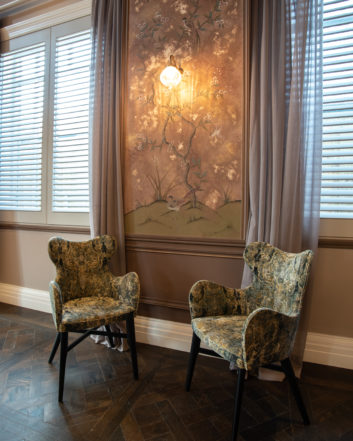 A large globally recognised retailer in London recently gave Carro a tour of its Dante equipped building. He recounts: “A few discreet speakers were visible in some areas but that was because I was looking for them and they were pointed out to me, in other areas absolutely nothing is visible as the speakers are embedded into the wall or furnishing and essentially plastered over.”
A large globally recognised retailer in London recently gave Carro a tour of its Dante equipped building. He recounts: “A few discreet speakers were visible in some areas but that was because I was looking for them and they were pointed out to me, in other areas absolutely nothing is visible as the speakers are embedded into the wall or furnishing and essentially plastered over.”
The definition of what a discreet solution varies from sector to sector, he says.
“A high end retailer like the previous example or a hotel is not primarily focussed on the sound. The soundscape is part of what enhances the experience but it’s not at the forefront, so it takes second place to the aesthetics and therefore discreet audio solutions are more popular.”
Emphasis on quality
It’s rather different when it comes to Houses of Worship, transportation hubs and live sound venues. “All have a greater emphasis on the quality of the sound being played out or being recorded. By definition they are more open to having AV components visible. One caveat is in some Unified Communications deployments. High-end conference or board rooms blur the line between UC and hospitality and in those instances discreet ceiling microphone arrays and speakers are more likely.”
Jan Vanvaerenbergh, Product Manager for hardware at Crestron, says that an insistence on minimalistic and discreet AV solutions is now coming largely from the museum sector “Often heritage buildings need to keep their authentic feel, while at the same time offering visitors a truly immersive, interactive experience,” he says.
In the Museum of Prague, AV was integrated to offer an immersive experience while maintaining the authenticity of the icon building, which has held listed status since 1962.
New technologies and developments like invisible speakers, AV over IP and wireless solutions are offering AV professionals the opportunity to rethink and redesign their AV solutions, he says.
“TV lifts and retracting cables lost their novelty in the bedroom and hotel room long before they found their way into the boardroom,” he quips. “Suddenly, enterprises are paying attention to aesthetics. They prefer to invest in one simple all-in-one meeting and scheduling solution instead of having rows and rows of keypads. Real estate prices drive companies to be creative with space, for instance by having their cafeteria doubling as several meeting rooms outside lunch hours, without visual cues and clutter.”
Discrete modernity
Examples of modern discreet AV installations include SentryOne, where meeting rooms look nothing like the meeting room of old. “Instead, all you see is a sofa and an empty coffee table across a big screen with a soundbar.”
In mission critical applications, performance is the de facto priority, but performance and aesthetics are not mutually exclusive, says Vanvaerenbergh. “Our TSR handheld remote, fliptops with retractable cables and Mercury conference device are just a few examples where performance and aesthetics form the perfect combination.”
Trends also vary depending on geographical location, he reveals. “In Europe and the US, we want as little clutter on the wall, while in some countries they don’t mind a touch screen on the wall with a row of keypads beneath it. As a global company, it’s our job to make sure we understand exactly what the customer means when he requests a discreet AV solution.”
Invisible sound
One company that has long defined discreet AV is invisible speaker supplier Amina. It’s plaster-over speaker solutions are the epitome of unobtrusiveness.
“Discreet design is a huge part of the market now when it comes to custom installation, says Amina’s Keziah Newlove. “The most prominent reasons behind this being design consciousness and, simply, a desire for space. The industry is now fully aware that clients don’t have to compromise on design any longer.”
Newlove also agrees that there are local differences.
“Here in the UK we have an equal mix of residential and commercial, whereas some of our European partners are much more heavily commercial. Houses of Worship are less common for us; many buildings are older and therefore have pragmatic and regulatory listed building restrictions.
“That being said, we have seen our technology used very successfully in listed residential buildings, where installed products become totally unseen, and therefore are acceptable to the relevant authorities.”
One reason why plaster-over speaker solutions have gained wider appeal is their improved sonic performance. Newlove is candid about improvements made.
“We challenge ourselves, and our products, more than anyone, which means we have been able to push performance continually forward, especially in recent years. Our new i range is the result of a huge amount of R&D and a commitment to our specialism. 20 years ago, overall frequency ranges were more limited, although HF response has always been good. Today products have a usable response from 40Hz up to 30Kz, and therefore are arguably better than a lot of conventional products on the market. Perhaps more importantly, the off-axis response of our technology remains the source of unequalled dispersion, giving fabulous room filling sound and incredible soundstage. Clients today don’t have to sacrifice any performance to have a fully discreet end result.”
Subjective qualities
Jools Browning, from integrator BrownHen Solutions (a CEDIA Member of Excellence) says that when it comes to the pros and cons of discreet AV, ultimately aesthetics and performance are subjective qualities.
“Each customer is different and we have certainly had customers prioritise aesthetics over performance but equally we have had experience where performance is more important. It is not unusual to discuss options with a couple that have different priorities, which is where the experience of a skilled integrator can be essential to help reach a solution that is desired by both parties.”
Browning has his own viewpoint when it comes to the definition of discreet solutions. “It’s more that different levels of priority are applied, especially given the usual associated cost increment,” he says.
“Consider a commercial project, perhaps refurbishing a boardroom. The client will probably consider a solution that avoids trailing cables and lots of table top equipment in order to be discreet, using ceiling speakers, hanging microphones and a wall mounted screen. A residential project however may want to go further with invisible plaster over speakers and a panel that disappears behind a wall when not in use.”
As for where the market will move in the future, he suggests the Marine sector is the most likely to be driving forward discreet design.
Ultimately, Browning says integrators are hugely innovative when it comes to achieving the desired outcomes for their customers, but they will always be limited to some degree by the ‘black boxes’ that are available. “Some TVs are better suited for discreet custom installations than others due to mundane aspects such as positioning of AV connections, he says.
Projection ultras
Ultra Short throw projection is another technology that’s coming into its own, as discreet AV picks up a head of steam, residential and professional installations, from living rooms to art galleries, are increasingly benefitting from UST products, Optoma’s Carina Popescu told us.
“Ultra Short Throw, and short throw projection has come a long way in the last few years. Immersive space and sensory rooms have become more popular and they need to keep projectors well-hidden. This has pushed the industry into creative ways of utilising optics.”
Discrete AV solutions no longer dictate a performance deficit, agrees Optoma’s Popescu.
“In the past, yes. Not so much now. Products are now being designed with discretion in mind, this is because projection is being used in new ways all the time. UST projection technology especially has come a long way, with image uniformity and focus now on par with its standard throw counterparts.”
Sami Mäkinen, AV business manager for pro AV audio brand Genelec, also refutes the idea that performance needs to be compromised in order to facilitate discreet AV.
“Here at Genelec we have never considered the idea of compromising when comes to audio quality,” he declares. “Total quality, not just audio quality, long lifespan and performance must always come first.”
Smarter sound
As an example, Mäkinen points to Genelec’s latest generation of Smart IP loudspeakers. “These maintain the same pure audio quality and performance as our studio loudspeaker range, but we’ve added a number of features that help the installer. For example, we now offer PoE power, Dante or AES67 AoIP streaming and control features, via Genelec Smart IP Manager software, over a single CAT cable.
“This solution saves an enormous amount of time and money for the installer, and with our public API, these products can also be integrated with third party home automation systems, such as Crestron and other similar systems.”
Where sound quality and high quality physical design matters, buyers are not prepared to accept poor performance in return for a more discreet sonic solution, he says.
“Our customers place a lot of value on these features when looking for the best solution for their project, whatever it may be, either in the home or a commercial AV installation. They know that when investing in Genelec, they get the best possible quality.”
Genelec’s Mäkinen also points to Audio over Ethernet (AoIP) as a game-changer when it comes to installation design and execution. “It’s clearly a huge trend at the moment and for the future,” says Mäkinen. “The ability to use existing IT infrastructure without compromising audio quality makes designs easy to execute and offers a lot more possibilities for system control. The concept is completely scalable too, ranging from small setups with just a few loudspeakers up to complex systems deploying hundreds of loudspeakers, with full control of the whole network from one computer.”
AoIP with PoE power and control is also very compatible with active loudspeaker technology, he adds. This simplifies installations – integrators don’t need to install big rack mount units with lots of amplifiers and heavy cabling.
“Marrying active technology with AoIP and, in our case PoE and control makes things easier and simpler still.”
Broad requirements
The bottom line is that discreet design is important to everyone, both in residential and commercial AV.
“No-one wants to be aware of loudspeakers hanging off walls, especially important in visitor attractions, certain high-end restaurants and bars, and of course the home,” says Mäkinen.
Koen Dekyvere, from smart home solutions provider Basalte, says good product and system design is ultimately about making choices focusing on what’s best for the end user.
“This delicate balance of elegant design and home technology performance has always been our bread and butter, especially since we only focus on the niche of luxury private intelligent homes. Aesthetics are important to help familiarise users with what their experience could look & feel like, it has the power to excite them, it attracts the attention, but that only takes them so far. Equally important is proper performance by offering quality, both in the way it’s built and the materials used, as well as how it works and performs and if it’s easy and comfortable to use.”
Interior design and fashion heavily influence today’s general taste, and therefore also how home technology is designed, adds Dekyvere.
“What makes it interesting is that the concept of what ‘discreet design’ represents is so personal, and is also heavily influenced by culture, geographical location, history. That is why Basalte makes very pure, refined products: reduced to the essence on the outside, yet powerful and multifunctional on the inside. This gives our product portfolio a very timeless vibe that is appreciated around the globe.”
As an example, he cites the brand’s first Controls product, the Sentido design keypad. A very elegant, simple concept of a square keypad, divided in equal forms. “We introduced this design keypad more than a decade ago, and still, our product is welcomed as a truly innovative product around the world.”
This is an extended version of an article in the latest edition of Installation magazine – available to read here, now.


